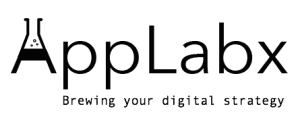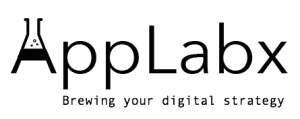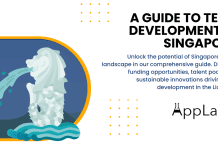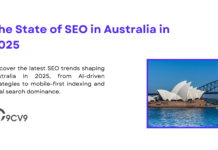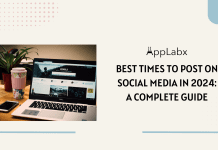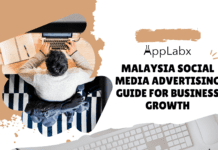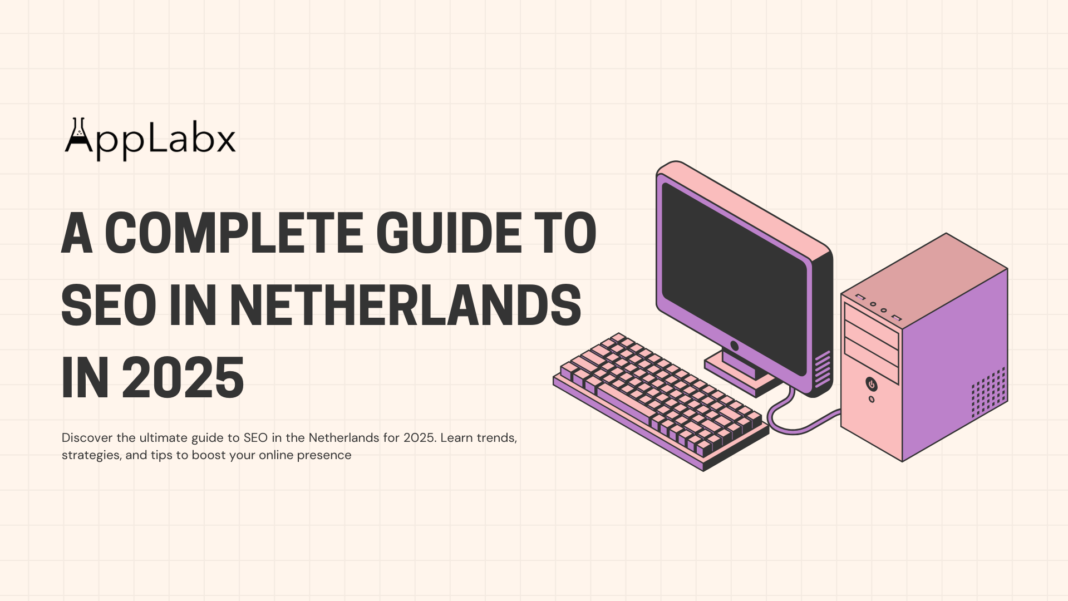Key Takeaways
- Stay ahead with local SEO, AI-driven trends, and multilingual strategies tailored to the Dutch audience.
- Focus on technical SEO, fast-loading websites, and sustainability to meet consumer expectations in the Netherlands.
- Leverage regional niches, data-driven insights, and quality content to dominate search rankings in 2025.
Search Engine Optimization (SEO) has become an indispensable pillar of digital marketing, and as we move into 2025, its role continues to grow in significance, especially in highly connected markets like the Netherlands.
Whether you are a small business owner, a seasoned marketer, or a multinational corporation looking to strengthen your presence in the Dutch market, understanding the nuances of SEO in the Netherlands is crucial to staying ahead of the competition.

Why Focus on SEO in the Netherlands in 2025?
The Netherlands, known for its advanced digital infrastructure and tech-savvy population, offers a unique and thriving environment for businesses looking to expand their online footprint. With over 17.7 million internet users, the Dutch market is one of the most digitally active in Europe. A staggering 98% of the population regularly uses the internet, with a high penetration of smartphones and mobile devices. This makes the Netherlands a fertile ground for digital-first strategies like SEO.
Moreover, the Dutch consumer is highly discerning, with a strong preference for localized, relevant, and high-quality content. Understanding how to optimize your website for Dutch users involves more than just translating your content into Dutch. It requires a tailored approach that considers cultural preferences, buying behaviors, and regional nuances.
The 2025 SEO Landscape: What’s New and Why It Matters
SEO is never static—it evolves as search engines update their algorithms and as user behavior shifts. In 2025, the SEO landscape in the Netherlands is set to be shaped by several key trends:
- Voice Search Optimization: With the growing adoption of voice-activated devices like Google Nest and Alexa, optimizing for voice queries will be critical.
- AI-Driven Search: Artificial intelligence continues to influence how search engines rank websites, making content relevance and user intent more important than ever.
- Sustainability as a Ranking Factor: The Netherlands has always been at the forefront of sustainability initiatives. Reflecting this trend in your SEO strategy can resonate strongly with Dutch audiences.
- Local SEO and “Near Me” Searches: Dutch consumers increasingly rely on local search to find businesses, emphasizing the need for robust local SEO strategies.
The Importance of an Adaptable SEO Strategy
As Google, Bing, and other search engines refine their algorithms, businesses must adopt flexible strategies that align with these changes. Whether it’s adhering to Google’s Core Web Vitals for page speed and interactivity or using advanced analytics tools like Google Analytics 4 (GA4), success in 2025 requires staying informed and adaptable.
Unique Challenges and Opportunities in the Dutch Market
The Dutch market presents some distinct challenges. With a bilingual population that often switches seamlessly between Dutch and English, businesses must carefully consider language and localization in their content strategies. Additionally, Dutch consumers prioritize privacy and data security, meaning compliance with GDPR and other regulations isn’t optional—it’s essential.
On the flip side, the opportunities are abundant. The Netherlands’ robust e-commerce market, with over €30 billion in annual online sales, offers immense potential for businesses that can rank high in search engine results. From optimizing for local directories to leveraging Dutch cultural events like King’s Day for seasonal content, there are countless ways to connect with this dynamic audience.
What to Expect in This Guide
In this comprehensive guide, we’ll cover everything you need to know about succeeding with SEO in the Netherlands in 2025. From understanding the digital behavior of Dutch consumers to implementing cutting-edge technical SEO strategies, this guide is your roadmap to achieving better visibility, traffic, and conversions.
Here’s what we’ll explore in detail:
- The digital landscape and cultural nuances of the Dutch market.
- Emerging SEO trends and their implications for 2025.
- Practical strategies for technical SEO, content creation, and link building.
- How to measure and optimize your performance effectively.
- Common challenges and actionable solutions specific to the Netherlands.
Whether you’re a beginner in SEO or an experienced marketer looking to fine-tune your approach, this guide will provide the insights and tools you need to dominate the Dutch search engine results pages (SERPs) in 2025. Let’s dive in.
A Complete Guide to SEO in Netherlands in 2025
- Understanding the Dutch Digital Landscape
- Key SEO Trends in the Netherlands for 2025
- Technical SEO Essentials for 2025
- Content Strategies for the Dutch Market
- Link Building in the Netherlands
- Measuring and Analyzing SEO Performance
- Challenges and Opportunities in SEO for the Netherlands
1. Understanding the Dutch Digital Landscape
The Netherlands is renowned for its advanced digital infrastructure and tech-savvy population, making it a pivotal market for businesses relying on online strategies. In 2025, understanding the unique aspects of the Dutch digital landscape is essential for crafting successful SEO campaigns. Below, we’ll explore various dimensions of this vibrant ecosystem, from internet usage patterns to cultural nuances that shape online behavior.
The Digital Landscape in the Netherlands: Key Statistics
The Netherlands boasts some of the highest levels of internet adoption in Europe. These figures highlight the opportunities for businesses operating in this market:
- Internet Penetration:
- Nearly 98% of the Dutch population uses the internet, indicating near-universal connectivity.
- Urban areas like Amsterdam, Rotterdam, and Utrecht show higher adoption of digital technologies.
- Mobile and Desktop Usage:
- Mobile accounts for 70% of online traffic, reflecting the growing importance of mobile-friendly websites.
- Desktop usage remains relevant for B2B sectors and complex decision-making processes.
- Popular Search Engines:
- Google dominates the market with over 92% market share, followed by Bing and DuckDuckGo.
- Ecosystems like Google Maps and Google My Business play a crucial role in local search optimization.
Cultural Nuances Shaping Online Behavior
Dutch consumers exhibit unique online habits shaped by cultural values such as practicality, transparency, and trust. Tailoring your SEO strategy to align with these preferences can significantly enhance your success.
- Language Preferences:
- Bilingual Advantage: While Dutch is the primary language, many consumers are fluent in English. Businesses should localize content into Dutch while maintaining high-quality English versions for broader appeal.
- Example: A study by Eurostat found that 93% of Dutch internet users feel comfortable with English content, making it an essential consideration for e-commerce platforms.
- Practical and Direct Communication:
- The Dutch value straightforward messaging. Avoid overly promotional language and focus on providing clear, actionable information.
- Example: A SaaS company optimized its landing page with clear, benefit-driven headlines and saw a 30% increase in Dutch conversions.
- Trust and Transparency:
- Dutch consumers are cautious about data privacy. Websites should emphasize secure payment options, GDPR compliance, and clear cookie policies.
- Example: Websites displaying privacy certifications or trust badges experience higher click-through rates in the Netherlands.
Local Search Behavior and Trends
As the Dutch increasingly rely on local searches to make decisions, businesses must optimize for hyper-local queries.
- “Near Me” Searches on the Rise:
- Searches such as “restaurants near me” or “plumbers in Amsterdam” have grown by over 20% annually.
- Optimizing Google My Business profiles with accurate addresses, business hours, and reviews is critical for visibility.
- Local Directories and Platforms:
- Platforms like Marktplaats.nl and Iens.nl (a TripAdvisor subsidiary) are popular for local service discovery.
- Example: A restaurant listed on Iens.nl with high ratings experienced a 40% increase in website visits.
E-Commerce and Online Shopping Trends
E-commerce plays a massive role in the Dutch digital landscape, with consumers expecting seamless online shopping experiences.
- Preference for Local and Green Brands:
- Sustainability is a significant factor for Dutch consumers, with many prioritizing eco-friendly brands.
- Example: Bol.com, a leading Dutch e-commerce site, features a “sustainable choice” filter to cater to this demand.
- Payment Preferences:
- Dutch consumers prefer local payment methods like iDEAL over global options like PayPal.
- Businesses targeting this market must integrate iDEAL to reduce cart abandonment.
Social Media and Content Consumption
Social media platforms and content consumption habits reveal important insights for targeting Dutch audiences effectively.
- Top Social Media Platforms:
- Instagram and TikTok are highly popular among younger demographics, while LinkedIn dominates professional networks.
- Example: Dutch influencers frequently collaborate with brands for product promotions, making influencer marketing a valuable SEO strategy.
- Video Content:
- YouTube is the second-largest search engine in the Netherlands, with users consuming an average of 20 hours of video content weekly.
- Optimizing YouTube videos with Dutch keywords can improve discoverability.
Technological Advancements Driving Digital Behavior
The Netherlands is an early adopter of digital innovations, which directly impact SEO strategies.
- Smart Devices and Voice Search:
- Voice-activated devices like Google Nest are increasingly used for searches. Queries like “What’s the best café in The Hague?” require conversational keyword optimization.
- Example: A local bakery optimized its website for voice search and experienced a 15% boost in foot traffic.
- AI and Chatbots:
- AI-driven chatbots are prevalent in Dutch websites, enhancing user experience and engagement.
- Example: A Dutch travel agency integrated an AI chatbot to answer queries in both Dutch and English, improving conversion rates by 25%.
Conclusion
The Dutch digital landscape in 2025 is dynamic, offering immense potential for businesses willing to adapt to its unique characteristics. From understanding language preferences to leveraging local platforms and embracing emerging technologies, success in the Netherlands requires a strategic, localized, and culturally aligned approach. By tailoring your SEO strategies to align with these trends and nuances, your business can thrive in this highly connected and competitive market.
2. Key SEO Trends in the Netherlands for 2025
SEO in 2025 is characterized by rapid technological advancements, evolving user behavior, and stricter regulatory requirements. In the Netherlands, a tech-savvy population and high internet penetration make it vital for businesses to stay ahead of these trends. Below is an in-depth exploration of the most significant SEO trends shaping the Dutch digital landscape in 2025.
1. The Rise of Voice Search Optimization
As smart devices like Google Nest, Amazon Alexa, and voice-enabled smartphones become mainstream in the Netherlands, optimizing for voice search is no longer optional.
- Key Characteristics of Voice Queries:
- Voice searches tend to be longer, more conversational, and question-based.
- Example: Instead of typing “best cafés Amsterdam,” users might ask, “Where is the best café near me in Amsterdam?”
- How to Optimize for Voice Search:
- Focus on long-tail keywords that mimic natural speech patterns.
- Implement structured data to improve your chances of appearing in featured snippets, as these often power voice responses.
- Create an FAQ section on your website to answer common user questions directly.
- Example in Action:
- A local bike rental shop in Utrecht optimized its site with voice-friendly content and saw a 20% increase in bookings from smart device users.
2. AI-Driven Search and Personalized Experiences
Artificial intelligence is playing an increasingly prominent role in shaping search results. Algorithms like Google’s RankBrain and Multitask Unified Model (MUM) prioritize user intent and content relevance.
- Personalized Search Results:
- Dutch users expect search results tailored to their preferences, location, and browsing history.
- Example: A user searching for “best pizza” in Rotterdam receives location-specific results instead of generic options.
- How to Adapt:
- Use behavioral data to predict and meet user needs.
- Optimize content for semantic search by focusing on context and related concepts rather than individual keywords.
- Case Study:
- A Dutch clothing retailer used AI to personalize product recommendations based on user searches and achieved a 25% boost in click-through rates.
3. Sustainability as a Ranking Factor
Sustainability is deeply embedded in Dutch culture, and this is increasingly reflected in digital marketing trends.
- Impact of Sustainability on SEO:
- Businesses that promote eco-friendly practices and sustainable operations are gaining favor among consumers and search engines.
- Example: Google’s algorithm updates in 2025 favor websites with content highlighting green initiatives.
- How to Optimize for Sustainability:
- Include sustainability keywords like “eco-friendly,” “green products,” and “sustainable brands.”
- Highlight certifications and initiatives, such as CO2-neutral operations or partnerships with green organizations.
- Example in Action:
- A Dutch cosmetics brand featured its use of biodegradable packaging prominently on its website and improved its organic rankings for “sustainable cosmetics Netherlands.”
4. Local SEO and Hyper-Local Targeting
Local SEO continues to grow in importance, driven by the rise of mobile searches and “near me” queries.
- Key Trends in Local SEO:
- Dutch consumers increasingly rely on local search for services, events, and shopping.
- Example: Searches for “plumbers near me” or “organic shops in Utrecht” are rising.
- Optimization Tactics:
- Ensure your Google My Business (GMB) profile is updated with accurate details, including business hours, contact information, and customer reviews.
- Use local keywords like “Amsterdam bike rental” instead of generic terms.
- Build local citations on directories like Iens.nl or Marktplaats.nl.
- Case Study:
- A bakery in Rotterdam optimized its GMB profile and ran a location-based campaign, resulting in a 35% increase in foot traffic.
5. Video and Interactive Content Dominate
The Dutch audience loves engaging with video and interactive formats, making them essential for SEO success in 2025.
- Why Video Matters:
- YouTube remains the second-largest search engine globally and is hugely popular in the Netherlands.
- Videos increase on-page engagement, which positively impacts rankings.
- Interactive Content Trends:
- Quizzes, polls, and interactive infographics are increasingly used to boost user engagement.
- Example: Dutch travel agencies use interactive maps to help users plan trips.
- How to Optimize:
- Optimize video titles, descriptions, and tags with Dutch keywords.
- Add transcripts to videos for improved accessibility and SEO.
- Use tools like Google’s Web Stories to create immersive visual content.
- Example in Action:
- A Dutch language school created a series of YouTube tutorials and saw a 40% rise in website traffic from linked videos.
6. Core Web Vitals and Mobile-First Indexing
Google’s focus on user experience, particularly through Core Web Vitals, continues to influence rankings in 2025.
- Core Web Vitals Metrics:
- Largest Contentful Paint (LCP): Measures loading performance.
- First Input Delay (FID): Measures interactivity.
- Cumulative Layout Shift (CLS): Measures visual stability.
- Mobile-First Indexing:
- Google primarily uses the mobile version of websites for indexing and ranking.
- In the Netherlands, where mobile traffic accounts for 70% of online activity, optimizing for mobile is critical.
- How to Adapt:
- Use responsive design to ensure your website performs well across devices.
- Minimize page load times by compressing images and leveraging caching.
- Example in Action:
- A Dutch news portal reduced its page load time from 3 seconds to 1.5 seconds and saw a 50% improvement in bounce rates.
7. E-E-A-T: Building Trust and Authority
Google’s Experience, Expertise, Authority, and Trustworthiness (E-E-A-T) guidelines are more crucial than ever in 2025.
- How to Build E-E-A-T:
- Publish content written by subject matter experts.
- Highlight author credentials and company achievements.
- Encourage positive reviews and testimonials from Dutch customers.
- Case Study:
- A legal advisory firm in Amsterdam featured blog posts by certified lawyers and gained top rankings for competitive keywords like “Dutch employment law.”
Conclusion
The Dutch SEO landscape in 2025 is dynamic, with trends like voice search, AI-driven experiences, sustainability, and video content shaping the future. To succeed, businesses must adapt their strategies to align with these trends while keeping user preferences and local nuances at the forefront. By staying ahead of these developments, you can ensure your business remains competitive and relevant in the ever-evolving digital market of the Netherlands.
3. Technical SEO Essentials for 2025
Technical SEO lays the foundation for any successful SEO strategy, ensuring that search engines can effectively crawl, index, and rank your website. In the Dutch digital landscape, where competition is fierce and users demand seamless experiences, getting the technical aspects of SEO right is critical. Here’s an in-depth guide to the technical SEO essentials for the Netherlands in 2025.
1. Core Web Vitals: The Cornerstone of User Experience
Google’s Core Web Vitals remain a crucial ranking factor in 2025, focusing on page speed, interactivity, and visual stability.
- Key Metrics to Monitor:
- Largest Contentful Paint (LCP): Measures how fast the main content of a page loads. Target: Under 2.5 seconds.
- First Input Delay (FID): Assesses the delay before a user can interact with your site. Target: Less than 100ms.
- Cumulative Layout Shift (CLS): Evaluates the visual stability of a page. Target: Below 0.1.
- Optimization Tips:
- Use Content Delivery Networks (CDNs) to deliver content faster to Dutch users.
- Optimize images using formats like WebP to reduce file sizes without sacrificing quality.
- Minimize render-blocking resources such as JavaScript and CSS files.
- Example in Action:
- A Dutch e-commerce website reduced its LCP to 1.9 seconds by implementing lazy loading and saw a 30% improvement in organic traffic.
2. Mobile-First Indexing: Catering to the Mobile Majority
With over 70% of Dutch online traffic coming from mobile devices, optimizing for mobile-first indexing is essential.
- Key Areas to Focus On:
- Ensure your website is fully responsive and adapts to various screen sizes.
- Use dynamic serving or separate URLs only when necessary, as Google prefers responsive design.
- Test mobile usability with tools like Google’s Mobile-Friendly Test.
- Actionable Strategies:
- Avoid intrusive interstitials, which frustrate users and negatively impact rankings.
- Optimize navigation menus for smaller screens to improve usability.
- Compress and prioritize mobile assets for faster load times.
- Example in Action:
- A local Dutch restaurant updated its mobile navigation and improved its click-through rates by 25% for “restaurants near me” searches.
3. Structured Data and Rich Snippets
Structured data helps search engines understand your content and display rich results in SERPs, a feature that resonates well with Dutch users.
- Popular Types of Structured Data:
- Local Business Schema: Provides information about your business, such as address, opening hours, and reviews.
- Product Schema: Displays price, availability, and ratings for products in search results.
- Event Schema: Useful for promoting Dutch cultural events or local festivals like King’s Day.
- Implementation Tips:
- Use tools like Google’s Structured Data Markup Helper to generate schema.
- Test structured data with Google’s Rich Results Test to ensure proper implementation.
- Regularly update structured data to reflect accurate information.
- Example in Action:
- An Amsterdam-based event organizer used Event Schema for local events and saw a 50% increase in click-through rates from rich results.
4. Optimizing Crawlability and Indexability
Ensuring that search engines can crawl and index your website efficiently is fundamental to technical SEO.
- Key Practices:
- Use a robots.txt file to control which pages search engines can crawl.
- Submit an updated XML sitemap to Google Search Console, ensuring it includes only important pages.
- Check for and fix any crawl errors using tools like Google Search Console or Screaming Frog.
- Tips for Dutch Websites:
- Avoid duplicate content issues by using canonical tags, especially if you operate multilingual versions of your site (e.g., Dutch and English).
- Block search engines from crawling unnecessary sections like login pages or staging sites.
- Example in Action:
- A Dutch SaaS company audited its sitemap, removing irrelevant URLs, and experienced a 15% increase in indexed pages.
5. Secure and Accessible Websites
Dutch users are particularly cautious about privacy and security, making HTTPS a non-negotiable element in 2025.
- Key Security Features:
- Ensure your website uses an SSL certificate to provide HTTPS encryption.
- Regularly monitor for malware and vulnerabilities using tools like Sucuri.
- Accessibility Practices:
- Follow WCAG (Web Content Accessibility Guidelines) to ensure your site is accessible to users with disabilities.
- Use alt text for images and provide clear labels for form fields.
- Example in Action:
- A Dutch e-commerce site displayed its SSL certification prominently, boosting user trust and reducing cart abandonment by 20%.
6. Optimizing for Local Search in the Netherlands
Technical SEO must cater to local search trends, which are increasingly important in the Netherlands.
- Key Elements:
- Create separate landing pages for each location or region you target, with localized keywords.
- Include Dutch-specific contact information and ensure your NAP (Name, Address, Phone) details are consistent across all directories.
- Google My Business (GMB) Optimization:
- Add high-quality photos of your business.
- Collect and respond to reviews, as they influence local rankings.
- Example in Action:
- A hair salon in Rotterdam created a GMB profile and ranked for “hair salons near me,” increasing foot traffic by 40%.
7. Multilingual and Multiregional SEO
In the Netherlands, where both Dutch and English are widely used, having a multilingual SEO strategy is crucial.
- Best Practices:
- Use the hreflang attribute to signal language versions of your site to search engines.
- Avoid automated translations; instead, invest in native Dutch content creators for higher quality.
- Tailor your keyword research to include both Dutch and English terms.
- Example in Action:
- A global fashion retailer implemented hreflang tags for Dutch and English content, reducing bounce rates by 18%.
8. Monitoring and Analytics for Continuous Improvement
Tracking performance and making data-driven adjustments are essential for maintaining your SEO edge.
- Tools to Use:
- Google Analytics 4 (GA4): Offers event-based tracking for deeper insights into user behavior.
- Google Search Console: Provides data on impressions, clicks, and indexing issues.
- Local SEO Tools: Tools like BrightLocal can help track local keyword performance.
- Key Metrics to Monitor:
- Organic traffic by device (mobile vs. desktop).
- Local search visibility for specific Dutch cities or regions.
- Bounce rates and conversion rates for Dutch users.
Conclusion
Technical SEO is the backbone of your website’s success in the Netherlands in 2025. From ensuring fast load times and mobile-first readiness to implementing structured data and improving crawlability, every aspect contributes to a seamless experience for both users and search engines. By prioritizing these technical SEO essentials, you can position your website for long-term success in the competitive and dynamic Dutch digital market.
4. Content Strategies for the Dutch Market
In the highly competitive digital landscape of the Netherlands, crafting a robust content strategy tailored to local audiences is essential for SEO success. Dutch consumers value authenticity, relevance, and innovation, which should reflect in your content. Below is a comprehensive guide to effective content strategies for the Dutch market in 2025.
1. Emphasizing Localized Content
Localization goes beyond translation—it involves tailoring your content to align with Dutch culture, values, and preferences.
- Key Principles of Localized Content:
- Use Dutch language fluently: Content written in native-level Dutch performs better than direct translations.
- Adapt cultural references, holidays, and traditions to resonate with Dutch audiences (e.g., King’s Day promotions).
- Highlight local success stories, testimonials, or collaborations.
- Examples of Effective Localization:
- A global coffee chain localized its blog by sharing stories of Dutch coffee culture and featured cafés in Amsterdam, leading to increased engagement.
- A fashion retailer highlighted Dutch weather conditions in their content about seasonal wear, boosting sales.
2. Leveraging Data-Driven Insights
Understanding what Dutch users search for and engage with is vital for creating impactful content.
- Data Sources to Leverage:
- Use Google Trends to identify trending topics in the Netherlands.
- Analyze competitors’ top-performing content through tools like Ahrefs or SEMrush.
- Gather insights from local social media platforms like Hyves or regional Facebook groups.
- Actionable Tips:
- Create content around high-volume, low-competition Dutch keywords, such as “beste duurzame producten” (best sustainable products).
- Track search intent and produce content that answers popular queries in Dutch (e.g., “Hoe kan ik mijn huis isoleren?” – How can I insulate my home?).
- Example in Action:
- A home improvement brand analyzed search trends for “duurzame woningverbetering” (sustainable home improvement) and created a blog series, increasing website traffic by 30%.
3. Focusing on High-Quality, Evergreen Content
Evergreen content consistently drives traffic over time by addressing timeless topics that are always relevant.
- Characteristics of Evergreen Content:
- Long-form guides and tutorials.
- Content addressing recurring Dutch issues (e.g., navigating the cycling infrastructure or understanding Dutch tax rules).
- Frequently asked questions with detailed answers.
- Best Practices:
- Regularly update evergreen content to ensure accuracy and relevance.
- Use pillar pages to organize and link related content clusters.
- Optimize for keywords with steady search demand.
- Example in Action:
- A financial consultancy published a guide on “Belastingaangifte in Nederland” (Tax Returns in the Netherlands), which remains a top-performing page year-round.
4. Incorporating Visual and Interactive Content
Visual and interactive formats are highly engaging for Dutch audiences, particularly in niches like travel, e-commerce, and education.
- Effective Types of Content:
- Videos: Tutorials, behind-the-scenes content, and customer stories.
- Infographics: Summarize complex data, such as Dutch energy usage trends or urbanization statistics.
- Interactive Tools: Calculators, quizzes, and maps tailored to local needs (e.g., a tool to calculate energy savings for Dutch households).
- How to Optimize:
- Use localized visuals that reflect Dutch culture, landscapes, or products.
- Include Dutch subtitles or voiceovers for videos to cater to native speakers.
- Embed calls-to-action (CTAs) within interactive content to drive conversions.
- Example in Action:
- A Dutch travel agency created an interactive map of the Wadden Islands with itinerary suggestions, leading to a 25% increase in bookings.
5. Capitalizing on Trending Topics
Staying relevant requires addressing current events, trends, and seasonal interests in the Netherlands.
- Seasonal and Event-Based Content:
- Write blogs or create social media posts around Dutch holidays like Sinterklaas or Prinsjesdag (Budget Day).
- Produce seasonal guides, such as “Beste zomervakanties in Nederland” (Best summer vacations in the Netherlands).
- Trend Spotting:
- Monitor social media hashtags (e.g., #Duurzaamheid for sustainability trends).
- Use tools like BuzzSumo to identify viral topics.
- Example in Action:
- An outdoor gear company created a winter campaign around Elfstedentocht (the Eleven Cities Tour) and saw a 40% spike in engagement.
6. Prioritizing User-Generated Content (UGC)
Dutch consumers trust peer reviews and community contributions, making UGC a powerful tool.
- Examples of UGC:
- Customer reviews and testimonials.
- Social media posts featuring your products (e.g., photos of your product tagged with your Dutch hashtag).
- Community forums or Q&A platforms where users discuss your brand.
- How to Encourage UGC:
- Host contests encouraging users to share experiences with your brand.
- Feature user stories or photos prominently on your website or social channels.
- Reward contributions with discounts or exclusive offers.
- Example in Action:
- A Dutch sportswear brand ran a social media contest with the hashtag #FitNederland and generated thousands of UGC entries, increasing brand visibility.
7. Sustainability-Focused Content
Sustainability is a core value for many Dutch consumers, and addressing this in your content can foster trust and engagement.
- Key Topics to Address:
- Sustainable living tips (e.g., reducing energy consumption in Dutch homes).
- Eco-friendly product alternatives available in the Netherlands.
- Highlight your brand’s sustainability initiatives and certifications.
- Best Practices:
- Use storytelling to convey your sustainability journey.
- Incorporate relevant keywords like “duurzame producten” (sustainable products) or “milieuvriendelijk” (eco-friendly).
- Example in Action:
- A Dutch beauty brand created a series of blog posts about its cruelty-free practices, improving search rankings for “vegan cosmetics Netherlands.”
8. Leveraging Multilingual Content
With many Dutch residents being fluent in multiple languages, offering multilingual content can broaden your reach.
- Languages to Consider:
- Dutch and English are essential.
- Additional languages like German or French may be relevant depending on your audience.
- Implementation Tips:
- Use professional translation services instead of automated tools for accuracy.
- Optimize SEO for each language with localized keywords.
- Structure your site with clear language navigation options (e.g., hreflang tags).
- Example in Action:
- A real estate website operating in the Netherlands offered content in Dutch, English, and German, attracting diverse clients and improving lead generation by 20%.
9. Measuring and Refining Your Content Strategy
Analyzing the performance of your content ensures continuous improvement.
- Key Metrics to Monitor:
- Organic traffic and keyword rankings.
- User engagement metrics like bounce rate, time on page, and shares.
- Conversion rates from blog readers to customers.
- Tools to Use:
- Google Analytics 4 (GA4) for traffic and engagement insights.
- Ahrefs or SEMrush for keyword tracking and competitor analysis.
- Hotjar for heatmaps and user behavior tracking.
- Example in Action:
- A Dutch fitness blog used analytics to identify popular topics and doubled down on high-performing categories, leading to a 50% growth in monthly visitors.
Conclusion
Crafting a successful content strategy for the Dutch market in 2025 involves a blend of localization, innovation, and responsiveness to trends. By leveraging data insights, creating high-quality and engaging content, and aligning with local values like sustainability, you can build a strategy that resonates with Dutch audiences and drives long-term SEO success.
5. Link Building in the Netherlands
Link building remains a cornerstone of effective SEO in 2025, and the Dutch market presents unique opportunities and challenges for this strategy. Building a strong backlink profile requires a combination of quality, relevance, and compliance with Google’s guidelines to ensure sustainable growth. Below is a comprehensive guide to mastering link building in the Netherlands for 2025.
1. The Importance of Localized Link Building
Localized backlinks from Dutch websites carry more authority and relevance than generic links from international sites.
- Why Local Links Matter:
- They signal relevance to the Dutch audience and improve rankings for local searches.
- Google values geographic relevance, making Dutch backlinks a critical component of your SEO strategy.
- Examples of Local Link Sources:
- Dutch news outlets (e.g., NU.nl, De Telegraaf).
- Local business directories like Telefoongids.nl or Bedrijvenpagina.nl.
- Regional blogs or influencers targeting specific Dutch cities or provinces.
2. Building Relationships with Dutch Influencers and Bloggers
Collaborating with influencers and bloggers is a powerful way to earn quality backlinks while boosting brand awareness.
- How to Identify Influencers:
- Use platforms like LinkPizza or BuzzSumo to find Dutch bloggers in your niche.
- Search for active creators in specific industries (e.g., travel, food, or sustainability).
- Analyze social media profiles and blogs for engagement and domain authority.
- Examples of Effective Collaborations:
- Partnering with a travel blogger who features your brand in an article about Dutch destinations.
- Sponsoring a Dutch food blogger to review your product and link back to your site.
3. Leveraging Dutch Business Directories and Local Listings
High-quality directories and local listings are valuable for building trust and earning backlinks.
- Best Practices:
- Ensure your business is listed in Dutch directories like Openingstijden.nl or Bedrijvenpagina.nl.
- Maintain consistent NAP (Name, Address, Phone) details across all listings.
- Choose directories with high domain authority and avoid low-quality or spammy sites.
- Example in Action:
- A Rotterdam-based restaurant gained backlinks and improved local SEO by listing on prominent Dutch directories.
4. Creating Link-Worthy Content
High-quality, valuable content naturally attracts backlinks from Dutch websites.
- Content Types That Perform Well:
- Original Research: Studies or surveys about Dutch consumer behavior or market trends.
- Guides and Tutorials: E.g., “How to Navigate Public Transport in the Netherlands.”
- Infographics: Visual summaries of complex topics, like “Renewable Energy in the Netherlands.”
- Promotion Tips:
- Share your content with relevant Dutch publishers or industry leaders.
- Offer exclusive data or insights to journalists to secure media backlinks.
- Example in Action:
- A tech startup published a survey on Dutch digital trends and earned backlinks from Trouw.nl and Emerce.nl.
5. Gaining Backlinks from Educational Institutions
Backlinks from .edu.nl domains carry significant authority and trust.
- How to Secure Educational Backlinks:
- Offer student discounts or sponsorships for Dutch universities.
- Create scholarship programs and list them on educational portals.
- Collaborate on research projects with Dutch academic institutions.
- Example in Action:
- A SaaS company provided free access to its software for students, earning backlinks from Delft University of Technology’s resource page.
6. Leveraging PR and News Coverage
Public relations efforts can drive high-authority backlinks from Dutch news platforms.
- PR Strategies for Link Building:
- Create press releases about new product launches, partnerships, or events relevant to Dutch audiences.
- Pitch exclusive stories to local media outlets like NOS.nl or Het Parool.
- Use tools like HARO (Help a Reporter Out) to connect with Dutch journalists.
- Example in Action:
- A renewable energy company announced its entry into the Dutch market and gained backlinks from Duurzaamnieuws.nl.
7. Participating in Local Events and Sponsorships
Supporting local events, charities, or organizations can earn backlinks and improve brand visibility.
- How to Leverage Events:
- Sponsor Dutch cultural events like King’s Day celebrations or local festivals.
- Host community workshops or webinars and share the content online.
- Collaborate with Dutch organizations for co-branded initiatives.
- Example in Action:
- A fitness brand sponsored a local marathon and was featured on the event’s website with a backlink.
8. Guest Blogging on Dutch Websites
Guest blogging remains an effective method for acquiring backlinks, provided the content is high-quality and relevant.
- Finding Opportunities:
- Identify Dutch websites in your niche that accept guest contributions.
- Use keywords like “gastbloggen” (guest blogging) or “gastartikel” (guest article) to find opportunities.
- Best Practices:
- Focus on providing value rather than promotional content.
- Include a natural, contextually relevant backlink to your site.
- Tailor your content to the preferences of the Dutch audience.
- Example in Action:
- A health-focused company published a guest post on a Dutch fitness blog and drove both backlinks and traffic.
9. Avoiding Spammy Practices
Google penalizes websites that engage in spammy link-building tactics, so it’s crucial to prioritize quality over quantity.
- Practices to Avoid:
- Buying backlinks from low-quality Dutch sites.
- Using private blog networks (PBNs).
- Over-optimizing anchor text with exact-match keywords.
- Example of Penalties:
- A company that bought backlinks from a Dutch link farm experienced a drop in rankings due to a Google penalty.
10. Monitoring and Refining Your Link-Building Strategy
Tracking the performance of your backlinks helps ensure your strategy remains effective and compliant.
- Key Metrics to Monitor:
- Number of referring domains from Dutch websites.
- Domain authority and relevance of linking sites.
- Anchor text distribution to avoid over-optimization.
- Tools for Tracking:
- Ahrefs or SEMrush for backlink audits.
- Google Search Console for identifying referring domains.
- Majestic for analyzing link trust flow.
- Example in Action:
- A Dutch e-commerce store used Ahrefs to disavow low-quality backlinks and saw a 20% increase in organic traffic.
Conclusion
Link building in the Netherlands for 2025 is all about quality, relevance, and a localized approach. By building relationships with Dutch influencers, leveraging local directories, creating valuable content, and participating in community events, you can establish a strong and sustainable backlink profile. Avoid spammy tactics, monitor your results, and adapt to changes in Google’s algorithm to stay ahead in the competitive Dutch market.
6. Measuring and Analyzing SEO Performance
Tracking and analyzing SEO performance is essential to ensure your strategies yield tangible results. With evolving search algorithms and the unique dynamics of the Dutch market, businesses need to rely on data-driven insights to maintain their competitive edge. Here’s a detailed guide to measuring and analyzing SEO performance in the Netherlands in 2025.
1. Defining Key Performance Indicators (KPIs)
Identifying and tracking relevant KPIs is the foundation of effective SEO performance measurement.
- Essential SEO KPIs:
- Organic Traffic: Monitor visits from search engines to evaluate the visibility of your site.
- Keyword Rankings: Track position changes for target keywords relevant to Dutch users.
- Click-Through Rate (CTR): Assess the percentage of users clicking on your site from SERPs.
- Bounce Rate: Evaluate the percentage of visitors who leave after viewing a single page.
- Conversion Rate: Measure the proportion of visitors completing desired actions (e.g., filling out forms or purchasing products).
- Local Market-Specific KPIs:
- Visibility for geo-specific keywords like “beste fietsenwinkel Amsterdam” (best bike shop Amsterdam).
- Performance on Dutch-specific platforms such as Marktplaats.nl or Bol.com for e-commerce sites.
- Example in Action:
- A Dutch travel agency tracked CTR for “goedkope vakanties Nederland” (cheap vacations Netherlands) and optimized meta titles, leading to a 15% increase in clicks.
2. Tools for Tracking SEO Performance
Using the right tools is critical for accurate measurement and analysis.
- Google Tools:
- Google Analytics 4 (GA4): Provides insights into user behavior, traffic sources, and conversions.
- Google Search Console: Tracks keyword rankings, index coverage, and site performance on Google.nl.
- Third-Party Tools:
- SEMrush or Ahrefs: For keyword analysis, backlink tracking, and competitive research.
- Sistrix: Ideal for tracking Dutch search market data.
- Hotjar: Offers heatmaps and user behavior tracking to understand user engagement on your site.
- Example in Action:
- A Rotterdam-based e-commerce site used GA4 and Hotjar to identify a high drop-off rate on mobile devices, leading to a UX redesign and improved conversions.
3. Analyzing Organic Traffic
Organic traffic is a direct indicator of your SEO efforts’ success.
- Key Metrics to Monitor:
- Source of Traffic: Breakdown of traffic from Google.nl, Bing.nl, and DuckDuckGo.
- Device Performance: Analyze desktop versus mobile traffic, particularly for regions with strong mobile penetration.
- Landing Pages: Identify top-performing and underperforming landing pages.
- Tips for Improvement:
- Focus on pages with high impressions but low CTR to optimize titles and meta descriptions.
- Update underperforming pages with fresh content and better-targeted keywords.
- Example in Action:
- A Dutch fintech company noticed high traffic on a blog about “belastingtips voor ZZP’ers” (tax tips for freelancers) and expanded it into a comprehensive guide, boosting engagement by 40%.
4. Monitoring Keyword Performance
Tracking keyword rankings helps you understand your visibility for relevant search terms.
- Strategies for Keyword Analysis:
- Focus on geo-targeted keywords, such as “beste restaurants in Utrecht.”
- Analyze long-tail keywords with high intent, like “hoe een huis kopen in Nederland” (how to buy a house in the Netherlands).
- Monitor competitors’ keyword performance to identify gaps and opportunities.
- Tools for Tracking:
- Ahrefs Keyword Explorer or SEMrush Keyword Magic Tool for tracking Dutch keyword trends.
- Google Search Console for monitoring rankings directly from search data.
- Example in Action:
- A local bike shop optimized its site for “fietsenwinkel bij mij in de buurt” (bike shop near me), resulting in a 30% increase in local searches.
5. Analyzing Backlink Profiles
A healthy backlink profile is crucial for ranking well in competitive markets like the Netherlands.
- Key Metrics for Backlinks:
- Referring Domains: Track the number and authority of sites linking to you.
- Anchor Text Distribution: Ensure a natural mix of branded, generic, and exact-match anchors.
- Link Quality: Focus on links from high-authority Dutch sites rather than spammy global links.
- Best Practices:
- Disavow toxic backlinks using Google Search Console.
- Build relationships with Dutch bloggers and media outlets to secure high-quality links.
- Example in Action:
- A startup in The Hague analyzed its backlink profile and disavowed low-quality links, leading to a 10% recovery in rankings.
6. Evaluating User Experience (UX) and Core Web Vitals
Google’s emphasis on UX metrics makes it essential to track and improve site performance.
- Core Web Vitals to Monitor:
- Largest Contentful Paint (LCP): Measures loading performance.
- First Input Delay (FID): Tracks interactivity.
- Cumulative Layout Shift (CLS): Assesses visual stability.
- UX Factors to Consider:
- Mobile responsiveness, especially given the high mobile usage in the Netherlands.
- Navigation simplicity for Dutch users unfamiliar with complex layouts.
- Page speed improvements to reduce bounce rates.
- Example in Action:
- An online bookstore optimized its mobile site, improving LCP and reducing CLS, which increased mobile conversions by 25%.
7. Tracking Local SEO Metrics
For businesses targeting specific regions in the Netherlands, local SEO metrics are critical.
- Key Metrics to Monitor:
- Google Business Profile Insights: Analyze search views, calls, and direction requests.
- Local Keyword Rankings: Track visibility for terms like “kapsalon Amsterdam” (hair salon Amsterdam).
- Citations: Ensure consistent NAP information across local directories.
- Example in Action:
- A chain of cafes used local SEO tracking to dominate search results for “beste koffie Den Haag” (best coffee The Hague).
8. Leveraging Competitor Analysis
Understanding your competitors’ strengths and weaknesses provides actionable insights.
- What to Analyze:
- Their backlink profiles to identify potential link-building opportunities.
- Top-performing pages and the keywords driving their traffic.
- Content gaps that you can capitalize on.
- Tools to Use:
- Ahrefs or SEMrush for competitor backlinks and keyword analysis.
- BuzzSumo to discover their most shared content.
- Example in Action:
- A Dutch e-commerce site identified a competitor’s weak content on eco-friendly products and launched a better-optimized blog series, increasing market share.
9. Conducting Regular SEO Audits
Routine audits help identify technical issues and optimization opportunities.
- Aspects to Audit:
- On-Page SEO: Meta tags, headers, and internal linking.
- Technical SEO: Site speed, mobile-friendliness, and crawl errors.
- Content: Relevance, freshness, and engagement levels.
- Tools for SEO Audits:
- Screaming Frog for technical site audits.
- SEMrush Site Audit for a comprehensive SEO health check.
- Example in Action:
- An online retailer in Utrecht conducted an SEO audit and fixed broken links, leading to a 15% boost in organic traffic.
10. Reporting and Iteration
Transparent reporting and iterative improvements are crucial for long-term SEO success.
- Reporting Best Practices:
- Use clear visuals like graphs and charts to represent data.
- Compare performance against benchmarks and competitors.
- Highlight actionable recommendations for future improvements.
- Example of Iteration:
- A tech company analyzed quarterly SEO reports, identified stagnant content, and revamped underperforming pages, resulting in higher engagement metrics.
Conclusion
Measuring and analyzing SEO performance in the Netherlands for 2025 requires a detailed, localized approach. From monitoring organic traffic and keyword rankings to conducting regular audits and competitor analysis, a data-driven strategy ensures continuous improvement. By leveraging the right tools, focusing on user experience, and adapting based on insights, you can achieve sustainable growth in the Dutch market.
7. Challenges and Opportunities in SEO for the Netherlands
The SEO landscape in the Netherlands for 2025 presents both obstacles and growth prospects for businesses looking to strengthen their digital presence. Understanding these challenges and leveraging opportunities can help organizations craft strategies tailored to the Dutch market. Here’s a comprehensive look at the key challenges and opportunities.
1. Challenges in SEO for the Netherlands in 2025
While the Dutch digital ecosystem is ripe with potential, navigating it effectively requires addressing several hurdles.
1.1. Increasing Competition in the Dutch Market
As more businesses invest in SEO, standing out in competitive industries becomes increasingly difficult.
- Crowded Industries:
- E-commerce, tech startups, and sustainability sectors are particularly competitive in the Netherlands.
- Example: Competing with major players like Bol.com and Coolblue in the e-commerce sector.
- Rising Ad Costs:
- The shift toward hybrid SEO-PPC strategies increases the competition for organic rankings as businesses seek to offset paid media costs.
- Solution:
- Focus on niche keyword strategies and long-tail keywords like “beste duurzame producten Nederland” (best sustainable products Netherlands).
1.2. Adapting to AI and Algorithm Updates
Frequent changes in Google’s algorithms and the integration of AI in search engine functionalities make it challenging to maintain rankings.
- Key Issues:
- Google’s AI-driven SERPs prioritize highly relevant and localized results.
- Shifts in ranking factors, such as Core Web Vitals and E-E-A-T (Experience, Expertise, Authority, Trust), require constant adaptation.
- Example:
- A Dutch real estate site saw rankings drop after failing to optimize for Google’s Helpful Content Update.
- Solution:
- Continuously monitor algorithm updates and align content with Google’s preferences for high-quality, user-focused material.
1.3. Navigating Multilingual SEO
The Netherlands’ bilingual landscape presents unique challenges in optimizing for both Dutch and English audiences.
- Common Issues:
- Managing hreflang tags to avoid duplicate content issues.
- Ensuring translations maintain keyword intent and cultural relevance.
- Example:
- A tourism company lost traffic because their English pages outranked Dutch pages for local queries.
- Solution:
- Use localized keyword research tools and create culturally relevant content for each language.
1.4. Local SEO Challenges
Competing in regional markets like Amsterdam, Rotterdam, and The Hague requires hyper-localized strategies.
- Key Issues:
- Limited visibility in local directories or Google Maps.
- Difficulty maintaining consistent NAP (Name, Address, Phone) information across platforms.
- Solution:
- Prioritize local citations and optimize Google Business Profiles with region-specific keywords like “beste kapper Den Haag” (best hairdresser The Hague).
1.5. Evolving Consumer Behavior
Dutch consumers increasingly demand personalized, fast, and transparent online experiences.
- Key Challenges:
- Mobile-first expectations due to high smartphone penetration.
- The preference for ethical and sustainable businesses.
- Example: An ethical fashion brand struggled to compete without prominently showcasing its sustainability practices online.
- Solution:
- Implement UX improvements and align marketing messages with Dutch consumer values, particularly around sustainability.
2. Opportunities in SEO for the Netherlands in 2025
Amid these challenges, there are numerous opportunities to establish and grow a strong online presence in the Dutch market.
2.1. Localized Content for Regional Niches
Targeting smaller cities and niche markets provides opportunities to avoid competing with national-level players.
- Potential Opportunities:
- Create hyper-local content targeting towns like Groningen or Maastricht.
- Optimize for regional dialects or cultural preferences.
- Example:
- A café chain created content around “beste koffie Groningen” (best coffee Groningen), dominating regional search results.
2.2. Leveraging Sustainability Trends
Sustainability is a priority for Dutch consumers, opening doors for businesses aligned with eco-friendly practices.
- Opportunities for SEO:
- Create content focused on green living, such as “duurzame tips voor huishoudens” (sustainable tips for households).
- Highlight sustainability initiatives in your meta descriptions and blog posts.
- Example:
- A solar energy company optimized its blog on “hoe werken zonnepanelen” (how solar panels work) and increased organic traffic by 40%.
2.3. Emerging Technologies in SEO
Advanced technologies like voice search, AI, and AR/VR are transforming how Dutch consumers interact with digital content.
- Voice Search Optimization:
- Optimize for conversational queries like “hoe vind ik een loodgieter in Utrecht” (how to find a plumber in Utrecht).
- Example: A local plumbing service saw a 25% rise in traffic after optimizing for voice search queries.
- AI Content Tools:
- Use AI-driven tools for personalized and predictive content recommendations.
- AR/VR in E-commerce:
- Integrate AR for “try before you buy” experiences, such as virtual furniture placement or clothing fittings.
2.4. The Growth of Industry-Specific SEO
Specialized industries in the Netherlands, such as fintech, agri-tech, and renewable energy, offer untapped SEO potential.
- Strategies for Growth:
- Develop industry-specific content hubs that answer common consumer questions.
- Focus on keywords like “duurzame energie oplossingen” (sustainable energy solutions).
- Example:
- A Dutch agri-tech startup used SEO to target “smart farming tools Nederland” and saw a significant rise in qualified leads.
2.5. Expanding Into International Markets
For Dutch businesses, SEO offers an opportunity to grow globally while leveraging the Netherlands as a home base.
- Strategies for Global Expansion:
- Optimize multilingual websites with dedicated sections for international audiences.
- Target keywords that emphasize Dutch expertise, such as “innovative Dutch design” or “Dutch logistics services.”
- Example:
- A logistics firm grew internationally by optimizing content for “Netherlands supply chain solutions.”
2.6. Leveraging Social Proof and Community Engagement
Social proof, such as reviews and testimonials, plays a vital role in influencing Dutch consumers.
- Opportunities:
- Encourage satisfied customers to leave reviews on platforms like Trustpilot.nl or Google Reviews.
- Promote user-generated content on Dutch social media platforms like Instagram and TikTok.
- Example:
- A boutique hotel in Amsterdam leveraged positive reviews and user photos to boost organic traffic by 20%.
3. Balancing Challenges with Opportunities
To succeed in SEO in the Netherlands in 2025:
- Adapt to Evolving Trends:
- Stay agile in the face of algorithm updates and shifting consumer behavior.
- Focus on Long-Term Goals:
- Invest in high-quality content, technical SEO, and relationship building for backlinks.
- Leverage Tools and Insights:
- Use advanced analytics and market insights to measure success and identify opportunities.
Conclusion
The Dutch SEO landscape in 2025 offers a mix of challenges and opportunities. By addressing competition, algorithm changes, and localized SEO nuances while capitalizing on sustainability trends, emerging technologies, and niche markets, businesses can achieve significant growth. Success will depend on a proactive approach, continuous learning, and a strong commitment to aligning with Dutch consumer values and preferences.
Conclusion
The SEO landscape in the Netherlands in 2025 is dynamic, driven by rapid technological advancements, evolving consumer behavior, and a highly competitive digital market. This guide has covered everything from understanding the Dutch digital ecosystem to mastering technical SEO, content strategies, link-building tactics, and performance measurement. To succeed in this environment, businesses must adopt a proactive, data-driven approach that aligns with local preferences and global best practices.
Key Takeaways
Here’s a summary of the critical insights and strategies discussed:
- Understanding the Dutch Market:
- With one of the highest internet penetration rates in Europe, the Netherlands offers immense potential for businesses targeting a tech-savvy, mobile-first audience.
- Cultural nuances, regional dialects, and consumer preferences for sustainability and transparency should be at the core of your SEO strategy.
- Adapting to Key SEO Trends:
- AI integration, voice search, and mobile-first indexing will dominate the SEO landscape.
- Prioritize user intent, conversational search queries, and local optimization to stay ahead.
- Technical SEO and Website Performance:
- Ensure your site meets Google’s Core Web Vitals standards for speed, interactivity, and visual stability.
- Leverage structured data and multilingual SEO to cater to diverse audiences.
- Content Strategies for Dutch Audiences:
- Focus on high-quality, localized content that resonates with Dutch cultural values.
- Align content with trending topics like sustainability, ethical practices, and innovation.
- Effective Link-Building Tactics:
- Build relationships with local influencers, bloggers, and media outlets for authoritative backlinks.
- Create sharable, data-driven content to attract organic links.
- Performance Measurement and Adaptation:
- Use analytics tools to track KPIs such as organic traffic, CTR, and conversion rates.
- Conduct regular audits and competitor analyses to refine strategies based on insights.
Overcoming Challenges and Leveraging Opportunities
Every challenge in the Dutch SEO market is accompanied by an opportunity to innovate and grow:
- Challenges:
- Rising competition, frequent algorithm updates, and the complexities of multilingual SEO require adaptability and precision.
- Opportunities:
- Tap into regional niches, sustainability trends, and emerging technologies like AR/VR to differentiate your brand.
- Expand internationally by optimizing multilingual and culturally relevant content for global audiences.
Building a Future-Proof SEO Strategy for the Netherlands
To thrive in the Dutch market in 2025, your SEO strategy should be:
- Localized: Tailor your approach to regional needs and cultural values to build trust and relevance with Dutch audiences.
- Innovative: Embrace AI, voice search, and other emerging technologies to stay ahead of competitors.
- Data-Driven: Continuously monitor performance and pivot strategies based on insights and market trends.
- Sustainable: Align with consumer values by promoting eco-friendly practices and transparency in business operations.
Why SEO Matters in 2025
SEO remains one of the most cost-effective and impactful digital marketing strategies. It not only drives organic traffic but also builds brand authority, enhances user experience, and fosters long-term customer loyalty. In a digitally connected nation like the Netherlands, businesses that prioritize SEO can establish themselves as leaders in their industry.
Next Steps for Your SEO Journey
- Audit Your Current Strategy: Evaluate your website’s technical performance, content quality, and backlink profile.
- Invest in Expertise: Collaborate with SEO professionals or agencies specializing in the Dutch market.
- Stay Updated: Keep up with the latest SEO trends and Google updates to maintain a competitive edge.
- Experiment and Iterate: Test new strategies, measure their success, and adapt based on results.
Final Thoughts
The Netherlands offers a fertile ground for businesses ready to embrace the challenges and opportunities of SEO in 2025. With a consumer base that values innovation, transparency, and sustainability, the potential for growth is immense. By implementing the strategies outlined in this guide, businesses can not only optimize their digital presence but also build meaningful connections with their target audience, ensuring long-term success in one of Europe’s most vibrant digital markets.
Take action now to refine your SEO strategy, adapt to the evolving digital landscape, and position your brand for success in the Netherlands in 2025 and beyond.
If you are looking for a top-class digital marketer, then book a free consultation slot here.
If you find this article useful, why not share it with your friends and business partners, and also leave a nice comment below?
We, at the AppLabx Research Team, strive to bring the latest and most meaningful data, guides, and statistics to your doorstep.
To get access to top-quality guides, click over to the AppLabx Blog.
People also ask
What is SEO, and why is it important for businesses in the Netherlands in 2025?
SEO is the process of optimizing a website to rank higher on search engines, making it easier for Dutch audiences to find businesses online.
What are the top SEO trends in the Netherlands for 2025?
Trends include AI-driven search optimization, voice search, local SEO, mobile-first indexing, and prioritizing sustainability-focused content.
How does local SEO differ in the Netherlands?
Local SEO in the Netherlands focuses on optimizing for regional cities, Google Maps, and Dutch-specific search terms like “beste restaurants Amsterdam.”
What is the importance of Dutch consumer behavior in SEO?
Understanding Dutch preferences, such as sustainability and transparency, helps tailor SEO strategies that align with audience expectations.
How does AI influence SEO in the Netherlands?
AI personalizes search results, refines keyword targeting, and optimizes user experiences, making SEO strategies more precise.
What is the role of mobile-first indexing in Dutch SEO?
With high mobile penetration, mobile-first indexing ensures your site ranks well by prioritizing mobile usability and speed.
How can I optimize for voice search in the Netherlands?
Use conversational and question-based keywords like “Waar vind ik een loodgieter in Utrecht” to align with natural voice queries.
Why is multilingual SEO essential in the Netherlands?
The bilingual nature of Dutch consumers requires optimizing content in both Dutch and English to reach a broader audience.
What are Core Web Vitals, and why are they important for Dutch websites?
Core Web Vitals are Google metrics measuring site speed, interactivity, and visual stability, crucial for ranking and user experience.
How can I create effective content for the Dutch market?
Focus on localized, high-quality, and culturally relevant content that addresses Dutch consumer needs and preferences.
What are the best link-building strategies for 2025 in the Netherlands?
Build relationships with local influencers, gain backlinks from Dutch directories, and create shareable, insightful content.
How can businesses measure SEO performance effectively?
Use tools like Google Analytics and SEMrush to track organic traffic, conversion rates, bounce rates, and keyword rankings.
What role does sustainability play in Dutch SEO?
Highlighting eco-friendly practices and sustainability in content appeals to the values of Dutch consumers, boosting engagement.
What are the challenges of SEO in the Netherlands for 2025?
Challenges include increased competition, frequent Google updates, and navigating bilingual SEO strategies.
How can businesses overcome competition in the Dutch SEO market?
Focus on niche keywords, create superior content, and optimize for localized and industry-specific search queries.
What tools are best for SEO in the Netherlands?
Tools like Ahrefs, Google Analytics, SEMrush, and Dutch-specific platforms like Textmetrics are ideal for SEO optimization.
How do regional differences affect SEO in the Netherlands?
Different regions have unique search terms and preferences, requiring hyper-localized strategies for cities like Amsterdam or Rotterdam.
How important are reviews for Dutch local SEO?
Reviews on platforms like Google Reviews and Trustpilot significantly influence rankings and consumer trust in the Netherlands.
What industries benefit the most from SEO in the Netherlands?
Industries like e-commerce, fintech, tourism, and sustainability-focused businesses gain significant advantages from SEO.
How do Google algorithm updates impact SEO in 2025?
Algorithm updates prioritize high-quality, user-focused content, and penalize sites with poor user experience or spammy practices.
What are long-tail keywords, and why are they crucial in the Netherlands?
Long-tail keywords target specific, less competitive queries like “duurzame schoenen kopen in Rotterdam,” improving ranking potential.
How does social media influence SEO in the Netherlands?
Engagement on platforms like Instagram and LinkedIn boosts brand visibility, which indirectly impacts SEO performance.
What is the importance of structured data for Dutch SEO?
Structured data enhances SERP features like rich snippets, making it easier for Dutch users to find relevant information.
How can Dutch businesses optimize for international SEO?
Use hreflang tags, translate content accurately, and target keywords relevant to international audiences while highlighting Dutch expertise.
How do backlinks affect SEO rankings in the Netherlands?
High-quality backlinks from Dutch websites signal authority to search engines, improving organic rankings.
What metrics should businesses focus on for SEO success in 2025?
Focus on organic traffic, domain authority, bounce rates, click-through rates, and keyword rankings for measurable success.
How does personalization affect SEO in the Netherlands?
Dutch users expect personalized search results based on their preferences, location, and previous interactions, influencing ranking strategies.
What is the role of content localization in SEO for the Netherlands?
Localized content ensures relevance by addressing regional needs, cultural nuances, and local search behaviors.
How can small businesses in the Netherlands succeed with SEO?
Leverage local SEO, focus on niche keywords, and maintain an active presence on local directories and Google Business Profile.
What is the future of SEO in the Netherlands beyond 2025?
The future includes greater AI integration, immersive AR/VR experiences, and more emphasis on sustainable and ethical business practices.
